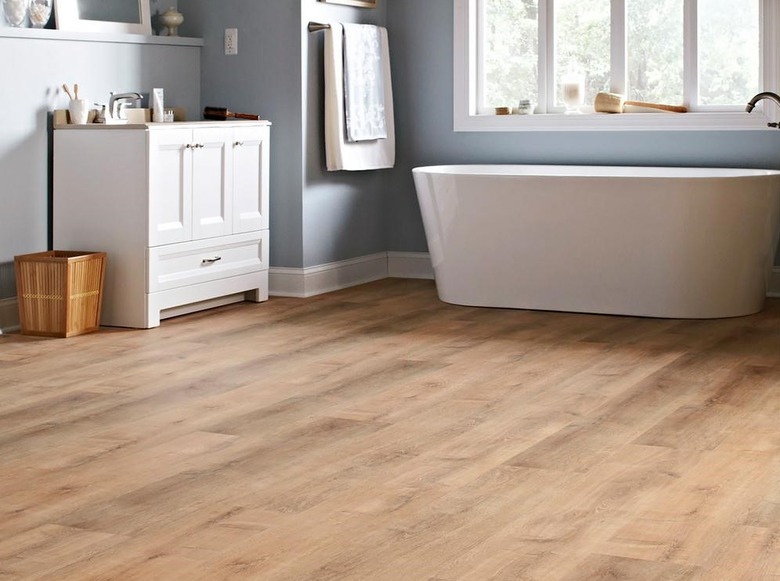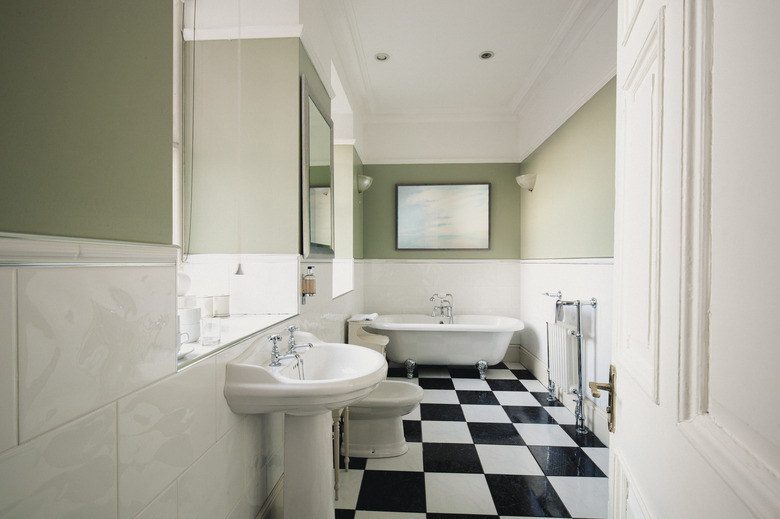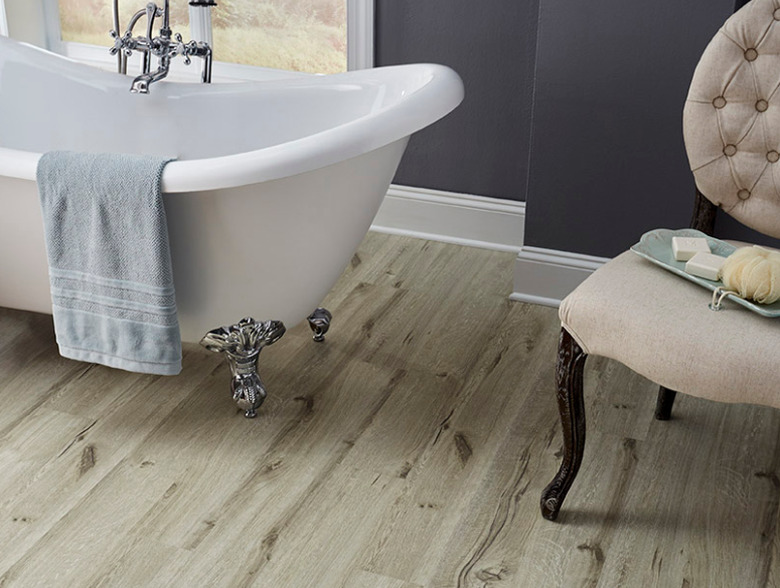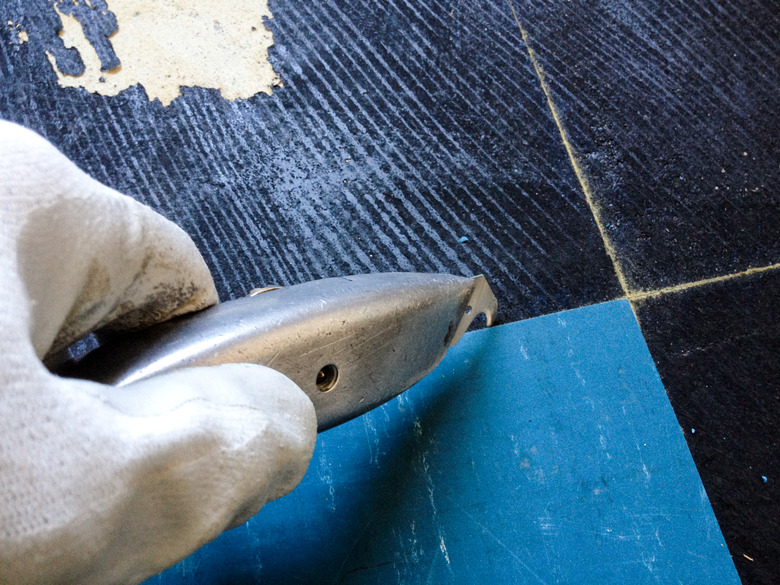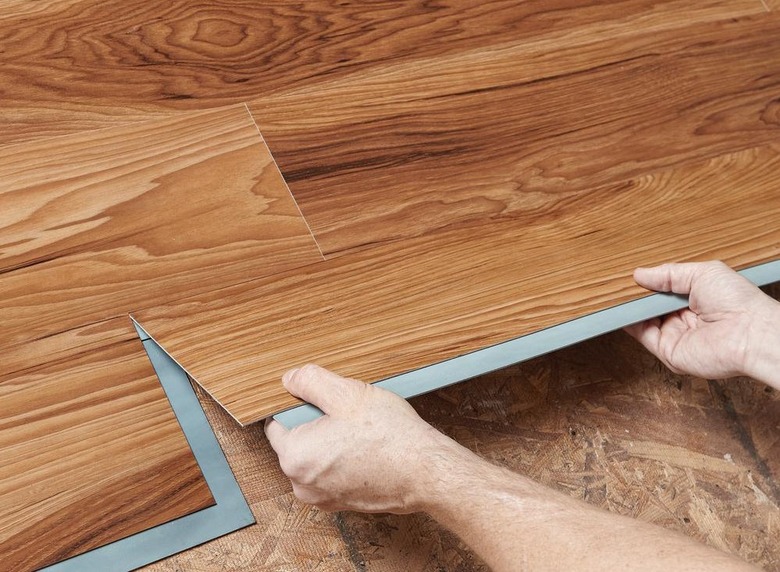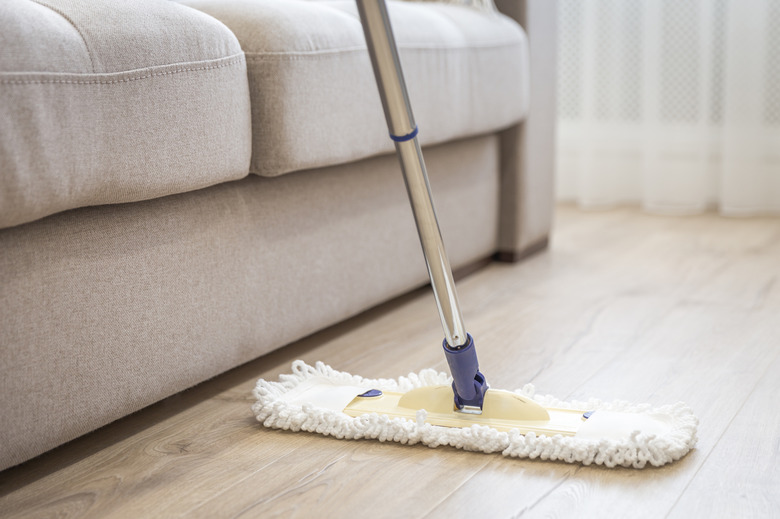Linoleum Vs. Vinyl Flooring
Many people mistakenly lump linoleum flooring and vinyl flooring together as though they were one type of product. While there are similarities, they are different from one another, and each has its own advantages and disadvantages.
Linoleum and Vinyl Basics
Linoleum and Vinyl Basics
According to the Resilient Floor Covering Institute, both products belong to the resilient flooring category, which means the flooring has a firm surface but gives slightly when you walk on it. Think of it as being halfway between hard flooring, like wood and ceramic tile, and soft flooring, like carpeting.
Linoleum has been used as a flooring material since about 1860. It's a natural, largely biodegradable product made from linseed oil, cork dust, wood fibers and other natural materials that are attached to a jute or canvas backing. Linoleum comes in tiles and planks as well as in sheet form.
Vinyl's principal ingredient is polyvinyl chloride (PVC), a petroleum-based product. First developed in the 1950s, vinyl flooring now claims a big chunk of the residential market.
Many well-known companies that manufacture vinyl flooring produced linoleum in the early part of the 20th century before switching to manufacturing vinyl. Vinyl flooring comes in sheets, tiles and planks.
Who Makes Linoleum and Vinyl Flooring
Who Makes Linoleum and Vinyl Flooring
In the United States, linoleum is much less widely distributed than vinyl. One of the largest linoleum producers is Forbo Flooring, a Switzerland-based company that offers over 300 colors in its Marmoleum line. The well-known brand Armstrong also produces a line of linoleum for the commercial market, although its main business is vinyl flooring. In addition to Armstrong, vinyl is sold by many major flooring manufacturers, including Mannington, Congoleum, Mohawk and Shaw.
Linoleum Looks and Uses
Linoleum Looks and Uses
Linoleum comes in a variety of colors and patterns that tend to be softer and muted when compared to vinyl, and the color goes all the way through the product, making minor repairs easy.
Because linoleum is naturally antibacterial and nonallergenic, it is often used in hospitals, schools and senior-living facilities. It resists scratches, and some floors can last 30 to 40 years. Old House Journal states that in the home, linoleum is a good choice for high-traffic areas like family rooms and kitchens. It is water-resistant but not waterproof, so it may not be a good choice for bathrooms or basements.
Linoleum comes in sheets, 12-inch square tiles and larger planks or panels that can measure up to 12 x 36 inches. Products costs about $3 to $6 per square foot installed. Sheet products tend to be less expensive than tiles but are primarily used for commercial applications. Tiles and planks are more versatile and easier to install.
Vinyl Flooring Options
Vinyl Flooring Options
Vinyl flooring covers a range of products that includes vinyl sheets, traditional vinyl tiles, luxury vinyl tiles (LVT), luxury vinyl planks (LVP) and rigid core vinyl flooring. Most vinyl flooring consists of several layers:
- The wear layer is a finish that protects the product from damage.
- The image layer provides the design. This can be anything from a single color to a realistic representation of natural stone or wood flooring, including hand-scraped and distressed looks. Vinyl flooring colors tend to be brighter than linoleum colors.
- The strength layer, or core, gives the flooring its rigidity. Some products are flexible, such as sheet flooring. Others, such as luxury vinyl and rigid core products, have substantial cores that provide strength and durability. The core also helps make some products totally waterproof.
- Some products have a cushion backing to deaden sound.
Manufacturers like Armstrong and Congoleum offer a full range of vinyl products that include natural wood and stone looks as well as less-expensive sheet products.
Where Is Vinyl Used?
Where Is Vinyl Used?
Because of the range of products, vinyl flooring can be installed just about anywhere in the home. Some luxury vinyl and rigid core products are totally waterproof, so wet areas are not off limits. Because of the realistic wood and stone looks, luxury vinyl is becoming more popular in formal areas such as living rooms and dining rooms.
Vinyl tile commonly comes in 12-inch and 24-inch squares. Planks are 4 to 8 inches wide and up to 72 inches long. Colgoleum produces a 16-foot-wide sheet product; most others are 12-feet wide. Vinyl products range from a low of about $2.50 per square foot (installed) for vinyl sheet to up to $10 per square foot for some luxury vinyl products. Expect a vinyl floor to last up to 20 years.
Vinyl flooring is made of a number of different materials, so low-quality products may outgas once installed. When shopping, look for the FloorScore label. It means that a third party has tested the product, and it meets low-emission standards.
Read more: A Homeowner's Guide to Luxury Vinyl Flooring (LVF)
The Right Base
The Right Base
Most linoleum and vinyl can be installed over most types of old flooring except carpeting. However, some flooring, such as ceramic tile and wood, may telegraph their texture through the new vinyl or linoleum. Because of this, it is usually best to remove the original flooring or cover it with a layer of 1/4- or 1/2-inch plywood. Always check the flooring manufacturer's instructions for installation details.
If the original flooring is very old, it may contain asbestos. Ripping it out could release asbestos fibers into the air, creating a health hazard. If you are unsure, consult a professional flooring contractor. The best thing to do may be to seal the original floor with a layer of plywood.
Plywood subfloors should be clean and flat for new vinyl or linoleum flooring. Some manufacturers do not recommend installing their products over particleboard subflooring. Consult the manufacturer's instructions when installing any flooring product over concrete.
Installing Vinyl and Linoleum Flooring
Installing Vinyl and Linoleum Flooring
Both linoleum and vinyl flooring involve similar installation methods. Sheet goods are glued in place with the seams solvent welded. Linoleum sheets are difficult to work with and are best left to a professional, while installing vinyl sheet is a popular do-it-yourself project.
Some vinyl tiles have an adhesive applied to the tile. You simply peel off the backing and place the tile. Most vinyl and linoleum tiles require glue-down installation. The product's manufacturer will specify the correct type of adhesive to use.
The easiest installation comes with the click-in-place products. Manufacturers have their own names for this, but click-in-place means that one tile or panel locks onto an adjacent one. This creates a floating floor where no part of the flooring is attached to the subfloor, so expansion and contraction of the subfloor does not affect the flooring. Quarter-round molding attached to the baseboards hides the edges of the flooring. You can find click-in-place for many luxury vinyl and some linoleum products.
Read more: How to Install Vinyl Plank (LVP) Flooring
Flooring Care and Maintenance
Flooring Care and Maintenance
Routine cleaning for both linoleum and vinyl involves frequent sweeping and vacuuming of the floor to remove dust and dirt. Regular cleaning is important because pieces of grit that are ground into the floor can cause damage.
Older linoleum products required waxing and polishing to keep the floor looking its best. Linoleum also has the tendency to discolor with age. Many newer products are sealed at the factory with a protective coating to prevent discoloration. To remove stains and grime from linoleum, many manufacturers recommend using specially formulated neutral-pH cleaners that they produce and sell.
Vinyl flooring has a protective layer that does not require additional waxing. Using a damp mop and mild detergent can usually remove dirt and stains. Avoid harsh detergents and chemicals. Most flooring manufacturers offer cleaners formulated for use with their flooring products.
References
- Resilient Floor Covering Institute: Resilient Flooring History
- Old House Journal: Ideas for Kitchen Floors: Linoleum, Tile & More
- Hagley Museum and Library: The Evolution of Linoleum
- International Association of Certified Home Inspectors: Linoleum Inspection
- Forbo Flooring Systems: Installation & Floor Care
- Armstrong Flooring: How to Choose the Best Luxury Vinyl Tile Floor
- Congoleum: Installation
